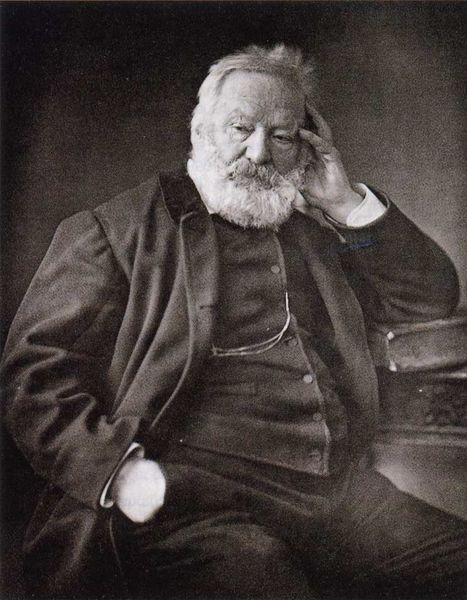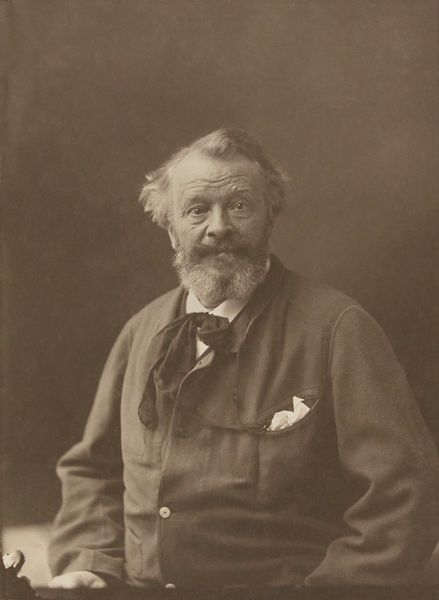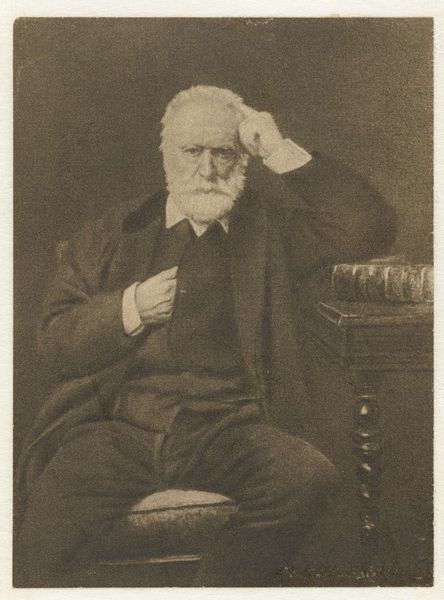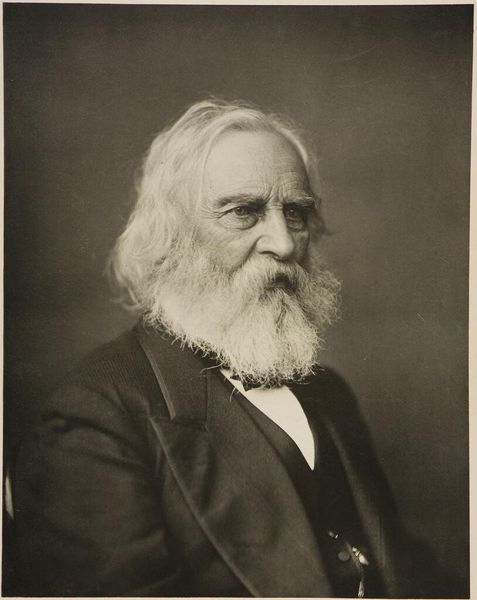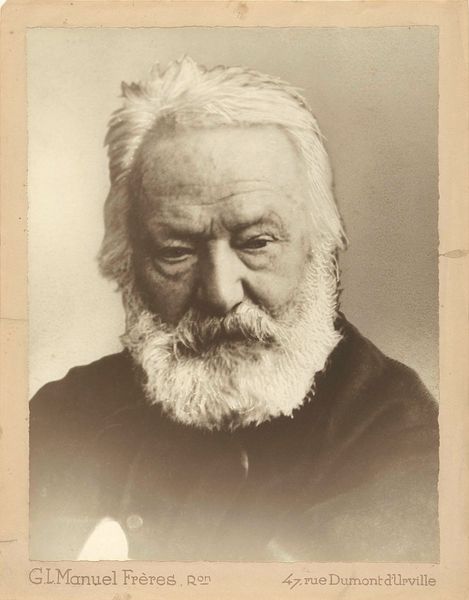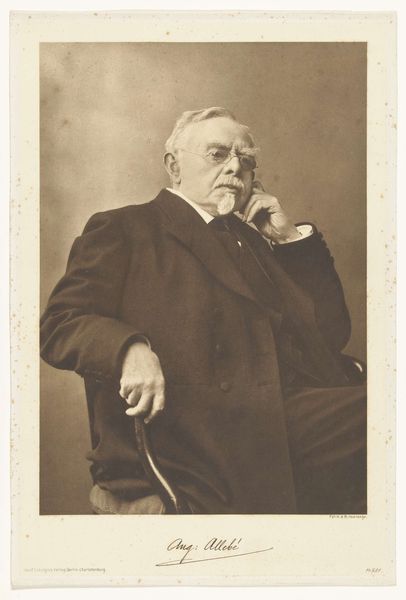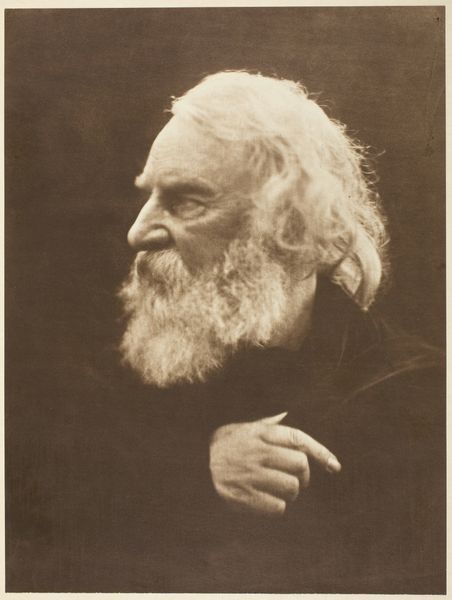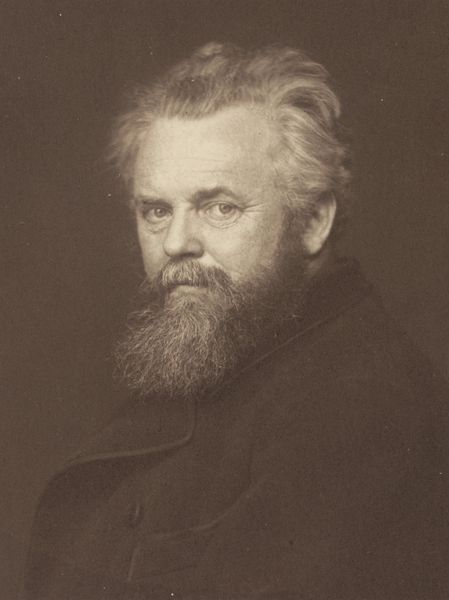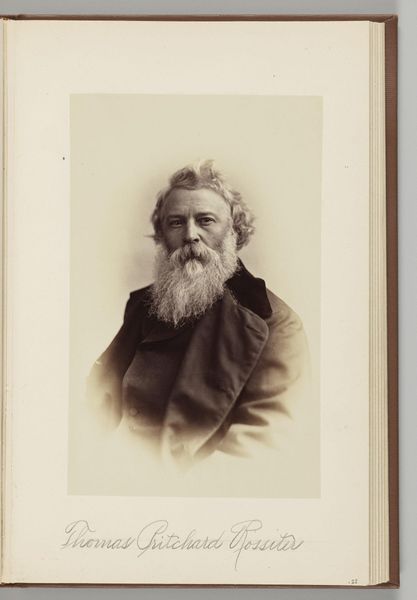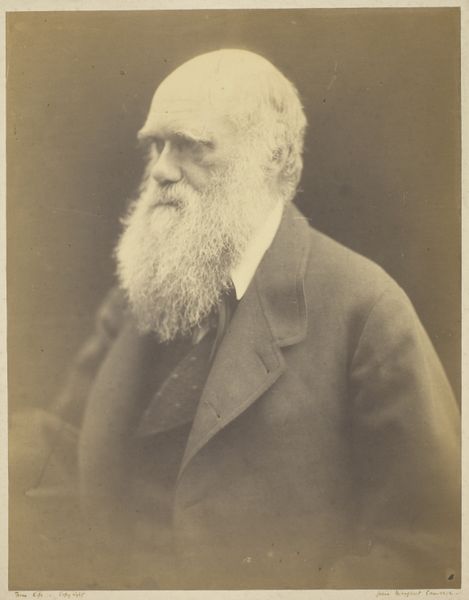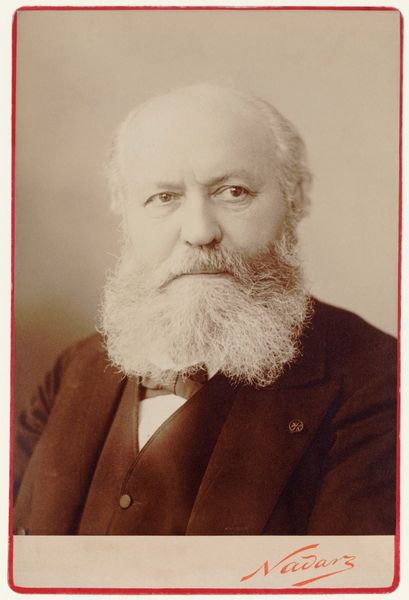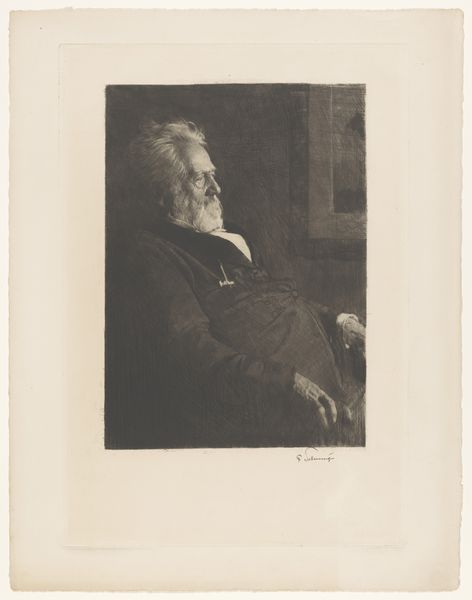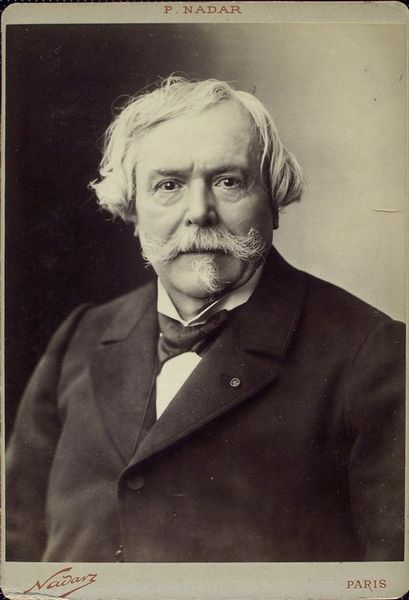
Copyright: Public domain
Editor: Here we have Félix Nadar's photograph of Victor Hugo, created around 1870. It's a gelatin silver print, and the tones are quite warm and inviting, almost sepia-like. The overall impression is one of gravitas. What is your interpretation of this particular image? Curator: Nadar's photograph captures more than just Hugo's likeness; it’s a carefully constructed image playing with the power of celebrity and public perception. Hugo was not merely a writer, but a towering figurehead of French Romanticism and Republican ideals. Consider how Nadar, himself a staunch Republican, might have been interested in projecting this image of intellectual and moral authority. Editor: So the photo is making a political statement in a way? Curator: Precisely. Think about the timing: 1870, the end of the Second Empire and the dawn of the Third Republic. Photography at this time became a powerful tool for shaping political discourse and public memory. A portrait of Hugo by Nadar was a deliberate act of enshrining him within a new political order. Have you thought about the pose? Editor: Well, he looks like he is thinking very deeply and maybe like a man of the people in deep thought. Curator: Indeed, but also of one resting, as in an academic or political position with power over others, due to his body language, such as hand position. Editor: This really puts the image in a whole new context for me. I was so focused on the Romantic aspects, like the soft light and the pensive mood, that I overlooked the potential political message embedded in the photograph. Curator: It shows how the history of a time shapes art. We can examine how art participates in society and constructs its power. A powerful work to really dive into what things it shows, politically, and artistically!
Comments
No comments
Be the first to comment and join the conversation on the ultimate creative platform.
